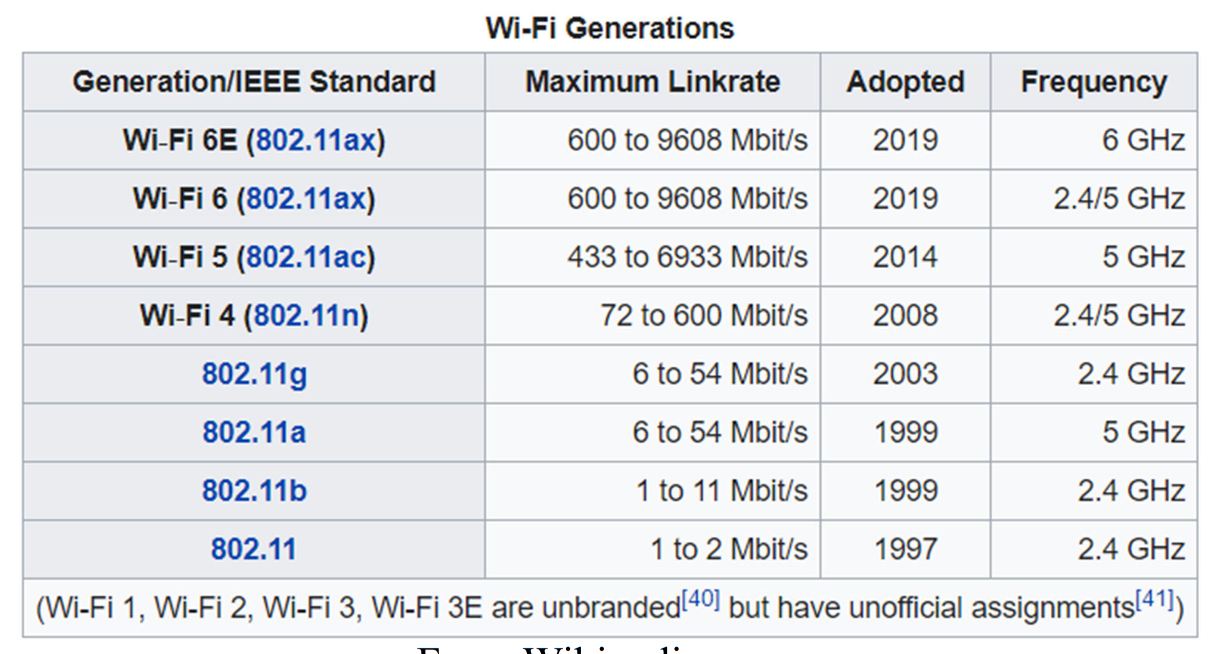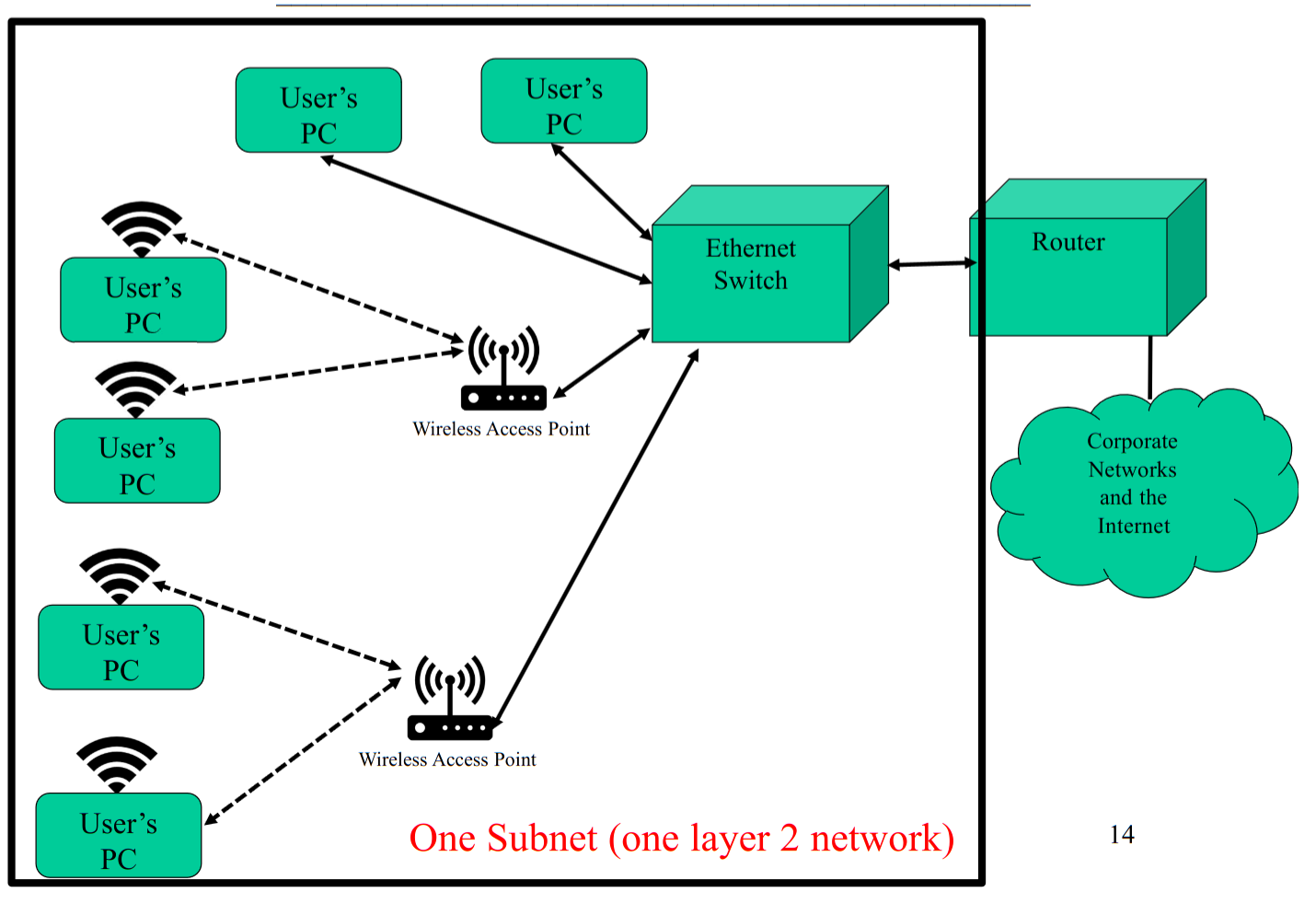Wifi - 802.11
Wireless Fidelity, and is Trademarked by Wi-Fi Alliance.
Any "wireless local area network (WLAN) products that are
based on the Institute of Electrical and Electronics Engineers'
(IEEE) 802.11 standards."
There have been a lot of changes to the standard over time:

The Wifi4/5/6 name changes were done mainly for marketing alone.
As we moved to higher frequencies, the problem we saw with Fiber Optic Cable applies here: they are sent faster but the range is shorter in terms of distance.
Some common terms:
Frame

Here:
- Frame body is the payload
- FCS is again the error detection
- Addresses for Data PDUs use:
- Address 1 - Receiver (ie: Wireless Access Point (WAP))
- Address 2 - Transmitter (ex: your computer)
- Address 3 - Destination Address (ex: your Wireless Router)

This is all considered one LAN, defined by a subnet (defined later).
Authentication

This is defined in the IEEE Standards (Ethernet and Wireless Standards). This would be by username and password. Some common terms:
- EAP-TLS: Extensible Authentication Protocol, Transport Layer Security
- LDAP: Lightweight Directory Access Protocol
- RADIUS: Remote Authentication Dial-In Service
ALOHA Protocol
Sending data to different points would cause collisions as multiple devices try to talk to one Wireless Access Point (WAP). Thus the ALOHA Protocol was made. Before they used Pure ALOHA:
- When you have data to transmit, you listen to see if no one is transmitting
- If no one is transmitting, you transmit
One of the problems is that one device may start to transmit, and the other device doesn't hear this and starts transmitting. Instead, in Slotted ALOHA: - You divide time in discrete intervals
- Each interval is a slot
- Slot time is big enough to know if another device is sending
- A sender may only transmit at the beginning of a slot
The advantage is that you double your throughput (since there's less collisions).
Carrier Senses Multiple Access with Collision Avoidance (CSMA/CA)
When a station has data to send, you find the roundtrip time and use that as your slot time, denoted MAXRTT. You sense the channel:
- If the channel is free for one slot time - send the frame
- Otherwise, use Binary Exponential Backoff:
RTT = 2 * RTT- Continue again, increating
RTTexponentially.
- In 802.11 After sending, sender waits on ACK (there may have been corruption).
- If no ACK arrives - use Binary Exponential Backoff again.
This is different than Ethernet since that just will send data and hope for the best. Here for the Wifi standard the ACK check make sure that we can keep resending until we get the right data.